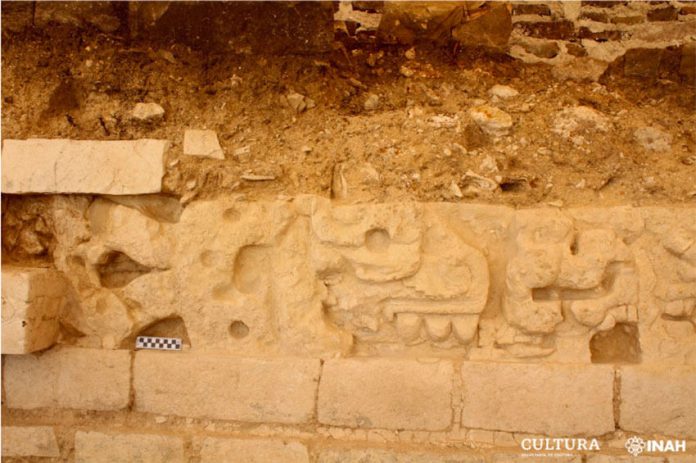Researchers with the National Institute of Anthropology and History (INAH) have announced their interpretation of a large stucco and limestone frieze discovered three years ago at the Atzompa archaeological site, located near the Monte Albán complex just outside Oaxaca city.
INAH said in a statement that the political, economic and social power that the Atzompa residential area had within the Zapotec capital of Monte Albán between A.D. 600 and 900 and the important relations its inhabitants established with the Mixteca region are some of the details revealed through the iconographic interpretation.
The frieze – which contains a series of Zapotec and Mixtec glyphs depicting the Mixtec year of the lizard, numerals, personages and a quetzal, among other things – has a well conserved section measuring 15 meters. The glyphs carved onto it constitute the longest Zapotec text of its kind known to exist in the Oaxaca Valley, according to Nelly Robles García, who heads up an archaeological project at Atzompa.
“Glyphs in general are allusions to power in the city, supernatural protection and a timeless time,” she said.
“Due to the location we know that it’s a message or discourse of power, associated with the use/function of the space of this residence, a message that could be seen when walking … between the main ball court and Ceremonial Plaza A,” Robles said.

She said the care and additional restoration of the frieze are conservation priorities for INAH. It was partially destroyed by the Zapotec inhabitants when they vacated Atzompa at the end of the ninth century, INAH said.
The researcher also noted that there are fragments of a series of carvings on the facade of the Casa del Sur, on which the frieze is located, that are associated with it. They include figurines of monkeys and jaguars and the representation of a quincunx, which INAH described as “a symbol that alludes to the four directions and the center of the universe.”
The carvings are “manifestations of the cosmic world to which the construction of a house like that obeyed,” INAH said.
The Atzompa archaeological zone is situated on a hill north of the UNESCO-protected Monte Albán site. It is open to visitors only on Saturdays and Sundays between 9:00 p.m. and 3:00 p.m., according to INAH.
Mexico News Daily
